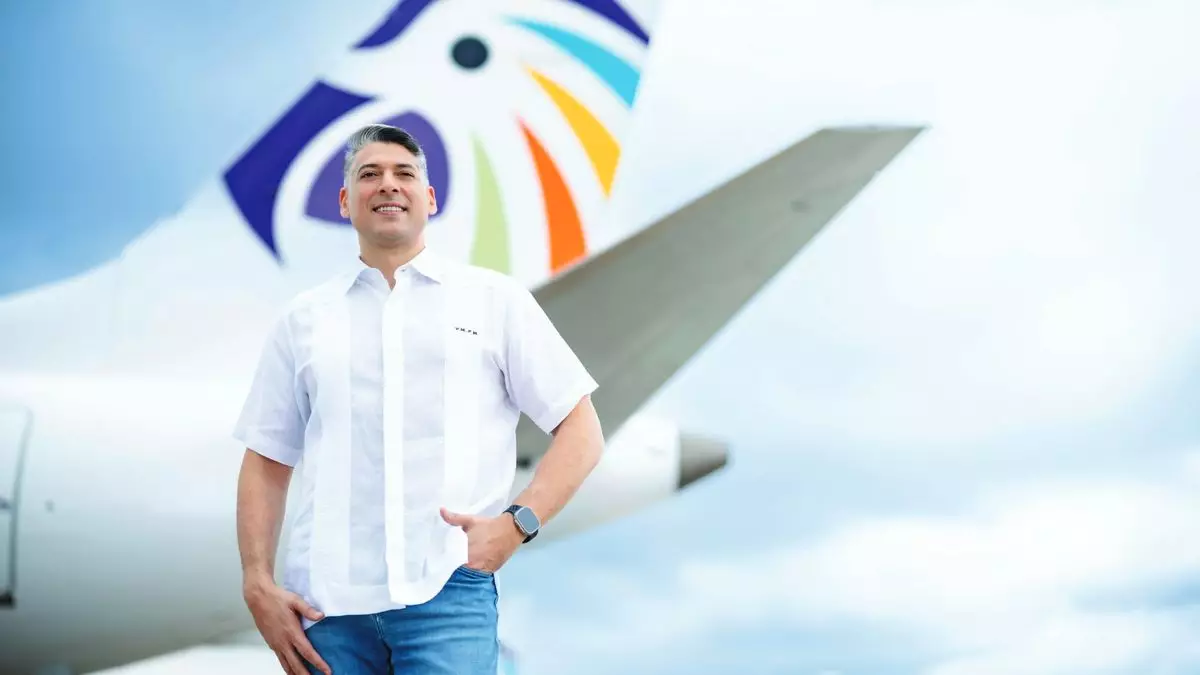The aviation landscape is evolving rapidly, with ultralow-cost carriers (ULCCs) like Arajet becoming pivotal players in the market. Founded in the Dominican Republic, Arajet’s ambition to expand its operations into the U.S. market reflects not only its growth trajectory but also the tremendous opportunities presented by recent international agreements. With optimism surrounding the Open Skies treaty signed between the Dominican Republic and the United States, Arajet seeks to carve out a significant position in the transcontinental travel market.
On August 2, 2023, the U.S. and the Dominican Republic reached a milestone by signing an Open Skies agreement, marking it as the 136th such treaty for the United States. This agreement is poised to relieve the limitations imposed by the current bilateral treaty that restricted route allocations and frequencies. As Arajet’s CEO, Victor Pacheco, expressed, the treaty holds the potential to revolutionize air travel between the two nations by allowing unlimited flights and facilitating connections to third countries.
Pacheco envisions Arajet launching routes to key U.S. destinations, including Miami, New York, and San Juan, by Christmas 2023. Although he admits this schedule is ambitious, the optimism stems from the new treaty’s ability to streamline the regulatory processes that have historically hindered access to the U.S. aviation market.
Since commencing operations in September 2022, Arajet has significantly expanded its footprint, currently serving 16 countries and 23 destinations with a fleet of 10 Boeing 737 Max 8 aircraft. The airline’s upcoming base in Punta Cana, set to open on October 27, 2023, will enhance its operational hubs, marking a strategic move to deepen its commitment to Caribbean and Latin American connectivity.
Arajet’s competitive advantage lies in its ability to adapt and evolve its service offerings. By targeting leisure travelers and tapping into the family visiting demographic, the airline can address the evolving needs of its clientele. The strategic allure of destinations across the Americas, from Canada to South America, underscores the airline’s ambition of becoming a key transit player for international travelers.
While Arajet’s application for U.S. route approvals is still pending, the urgency to establish connectivity with the U.S. market is palpable. Pacheco has identified three primary segments to target—younger Dominican travelers reuniting with friends and family, leisure travelers drawn to an array of Latin American destinations, and connecting flyers seeking multi-destination itineraries.
In a landscape heavily dominated by established U.S. airlines, Arajet positions itself against historically formidable competitors. Currently, major U.S. carriers like JetBlue and American Airlines are leading the market, providing extensive seat capacity and an established presence in the region. Pacheco acknowledges this challenging environment but emphasizes Arajet’s commitment to offering low fares while ensuring quality operational standards.
A noteworthy aspect of Arajet’s business model is its commitment to passenger comfort, which differentiates it from other low-cost carriers. The configuration of its seating, with standard rows offering 28 inches of legroom and additional legroom options extending to 32 inches, highlights Arajet’s intent to elevate the travel experience. Coupled with amenities like reclining seats and in-seat power outlets—a rarity among competitors like Spirit and Frontier—Arajet emerges as a promising alternative for discerning travelers who value both affordability and comfort.
The optimistic vision laid forth by Arajet’s leadership sets the stage for what could be a transformative period for Dominican aviation. While the pending application for U.S. service poses a challenge, the successful implementation of the Open Skies agreement could usher in new possibilities. However, Arajet must navigate not only the competitive market landscape but also logistics and regulatory hurdles that accompany international operations.
Ultimately, as the airline prepares to broaden its horizons, maintaining a focus on service quality, operational reliability, and customer satisfaction will be paramount to its success. The forthcoming months will be crucial as Arajet aims to realize its ambitious goals, ultimately shaping not just its future but also the connectivity landscape between the Dominican Republic, the U.S., and beyond. In essence, Arajet is poised as a future beacon in the evolving narrative of aviation in the Caribbean and Latin America.


Leave a Reply